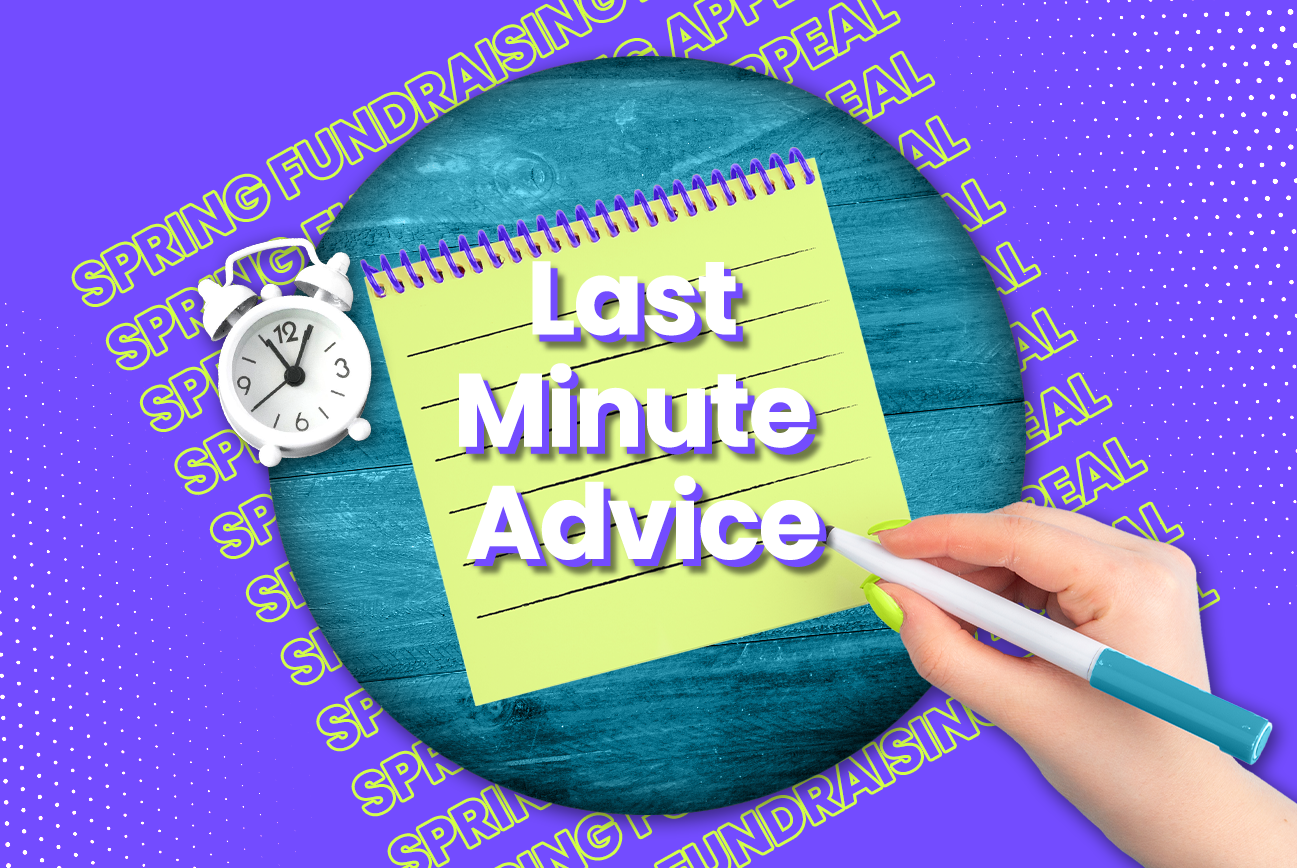It’s March, and there’s no doubt about it… Spring is here! And that means you’re running out of time if you’re still looking for ways to improve your spring appeal strategy.
We tried to warn you this day would come up fast! That’s why we published a blog with advice to help you prepare in February. So, we hope you’ve been thinking ahead and proactively planning for your spring fundraising appeal.
But if not, we’ve still got some good news for you. It may be too late to build additional touchpoints to warm donors up to give in the spring or to find new ways to take your surround sound strategy to the next level.
Time is of the essence. So, without further delay, let’s explore some strategies you can implement before your campaign begins in just a few short weeks!

Use a standout subject line.
An email appeal can’t be the only piece of your strategy, but it is a critical one! And crafting a more compelling subject line is one of the fastest ways you can improve your spring appeal and grow your fundraising revenue.
You probably already know this. But a subject line like “Will you support us?” or “Give to our spring appeal” won’t convince many donors to open your email.
So, start by taking the focus off your nonprofit and putting it on the donor and the difference they can make instead. You’ll need to be intentional with every word. Your subject line needs to be 60 characters or less if you want donors to see and absorb your entire message.
So, be sure to convey a sense of urgency and make the action you want donors to take clear. But avoid any language that refers to your appeal or organization.
You can try something like “Act now to help end homelessness.” or “Children are counting on your support.” instead.

Select powerful visuals.
The videos, graphics, and pictures you share often say more than the words in your appeal letter. So, choosing the right ones is critical if you want to improve your spring appeal.
And here’s the good news.
First, think about how you can apply compelling visuals in your current outreach strategy. Take the picture on your online donation page and include it in your emails to help connect the dots for donors.
Or take the video that showcases your work and performs well on social media and repurpose it as an additional touch to warm donors up before they receive your appeal.
Be intentional with every image you choose, just as you are with every word in your subject. You can’t share a gallery of 50 pictures and expect donors to find one that resonates.
Remember, this isn’t about painting a perfect picture. In fact, beautifully flawed and gritty images often resonate more with donors. They can do a better job of showing what makes your work so important and why you’re counting on donors for help.
READ MORE: The four principles of visual storytelling.

Stay focused on the donor.
You should take your donor-centric strategies beyond your subject line. We’ve already shared some ways to keep the focus on your donors, not your organization, in your emails.
But it’s not too late to refocus your appeal letter to underscore the donor’s role instead of your organization’s accomplishments.
We recommended using this approach to evaluate your last year-end appeal. But you can also use it to make last-minute improvements to your spring appeal strategy before it starts mailing!
So, grab a copy of your spring appeal letter, black and red pens, and a highlighter, and click the link below to get started!
EXERCISE: Let’s amplifi your next appeal letter.
Plan your follow-up.
You don’t need us to tell you that following up effectively is one of the most important parts of any fundraising campaign. There can’t be radio silence between appeals. You need to reach out to donors who supported you and let them know how their support is already making a difference.
Donors won’t be excited to give again if they feel you only care about what they can give. Retaining donors, keeping them engaged, and getting them excited to make a bigger difference takes a lot of work.
So, plan on reaching out at least three times after someone gives. First, make sure you have automated processes in place to send an email with a donation receipt and brief thank you message after someone gives.
Then, follow up with a more personal and heartfelt thank you message within a week of someone’s donation. Remember to focus on what the donor has made possible, not what your organization can accomplish.
Finally, keep them engaged by reaching out about a month after someone gives to share the ways their gift is already making an impact. This is the key to helping your donors feel like they made a difference and providing your organization with long-term support.
Want to talk specifics about your approach with a development strategist? Click here!









